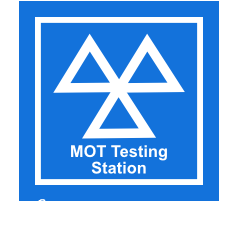Seven Urban Myths about your MOT
When it comes to cars, it helps to be in the know – especially when you hear a huge sigh from your mechanic and feel completely in the dark about what’s gone wrong with your vehicle. So, we thought it would be useful to debunk the myths you may have heard about having an MOT. This helpful guide will ensure your vehicle is as ready as it can be to pass its test.
Why have an MOT?
An MOT test ensures your car is in a roadworthy condition and that it meets environmental standards as outlined by the government and the Driver and Vehicle Standards Agency (DVLA). Most vehicles are required, by law, to have the test carried out annually.
-
All vehicles must have an MOT
This is not true. While most cars and motorbikes do need an MOT, some vehicles are exempt. Cars under three years old and cars or motorbikes made before 1960 do not need MOT testing. Those powered with electricity are also exempt. Tractors don’t need an MOT.
-
You can’t drive a car without an MOT to or from the garage
Driving on a public road without a current MOT is illegal and can invalidate your insurance. However, you can drive a car if:
* You are taking it to the testing station for its MOT when the appointment was pre-arranged
* It failed its test but you are driving it away to be repaired
* You are taking it to be re-tested after its repairs
You can always drive your car away if it failed the MOT but its current certificate is still valid.
It is worth remembering that you can be fined up to £2,500 and banned from driving if you’re caught using a vehicle in a dangerous condition.
-
Any garage can do an MOT
Garages can advertise that they offer MOTs, but they must be government-approved for them to be valid. This should be checked before you book an appointment to avoid wasting money. If you are unsure, you can check online to see which garages can help you with your MOT.
-
The spare tyre must be legal
Your spare tyre does not need to be legal as it’s not checked as part of the MOT. However, if there’s no spare tyre in the car as it’s been temporarily fitted, then it will be tested alongside the other three wheels.
-
Every part of the car is tested
Another myth. Most elements of the vehicle are tested, except the condition of the engine, clutch and gearbox.
-
If your car fails its MOT there’s nothing you can do except get it repaired
If your vehicle fails, you will be given a VT30 certificate which shows a list of all the faults or reasons why your car didn’t pass its test.
If you have reason to believe one of the failures is incorrect, you can appeal by sending a form to the DVLA within 14 working days of the test. You will be offered an opportunity for your vehicle to be re-checked within five days but you will need to pay the full test fee again. Some or all of your fee will be returned if your appeal is successful.
-
Cheap MOTS mean poor quality testing.
Not at all. MOTs need to be done to government standard and to a specific checklist so there should be no differences in terms of quality.
Fees are no reflection on standard. Maximum fees garages can charge are set by the Department for Transport. The current fee is £54.85 for a car and £29.65 for a motorbike. Garages can charge whatever amount they like, up to the maximum approved price.
As you can see, there are many myths about MOT testing but we hope we have debunked some of them here. If you are in doubt about the quality of your tyres prior to your test, you can contact your local garage for further advice and support.


